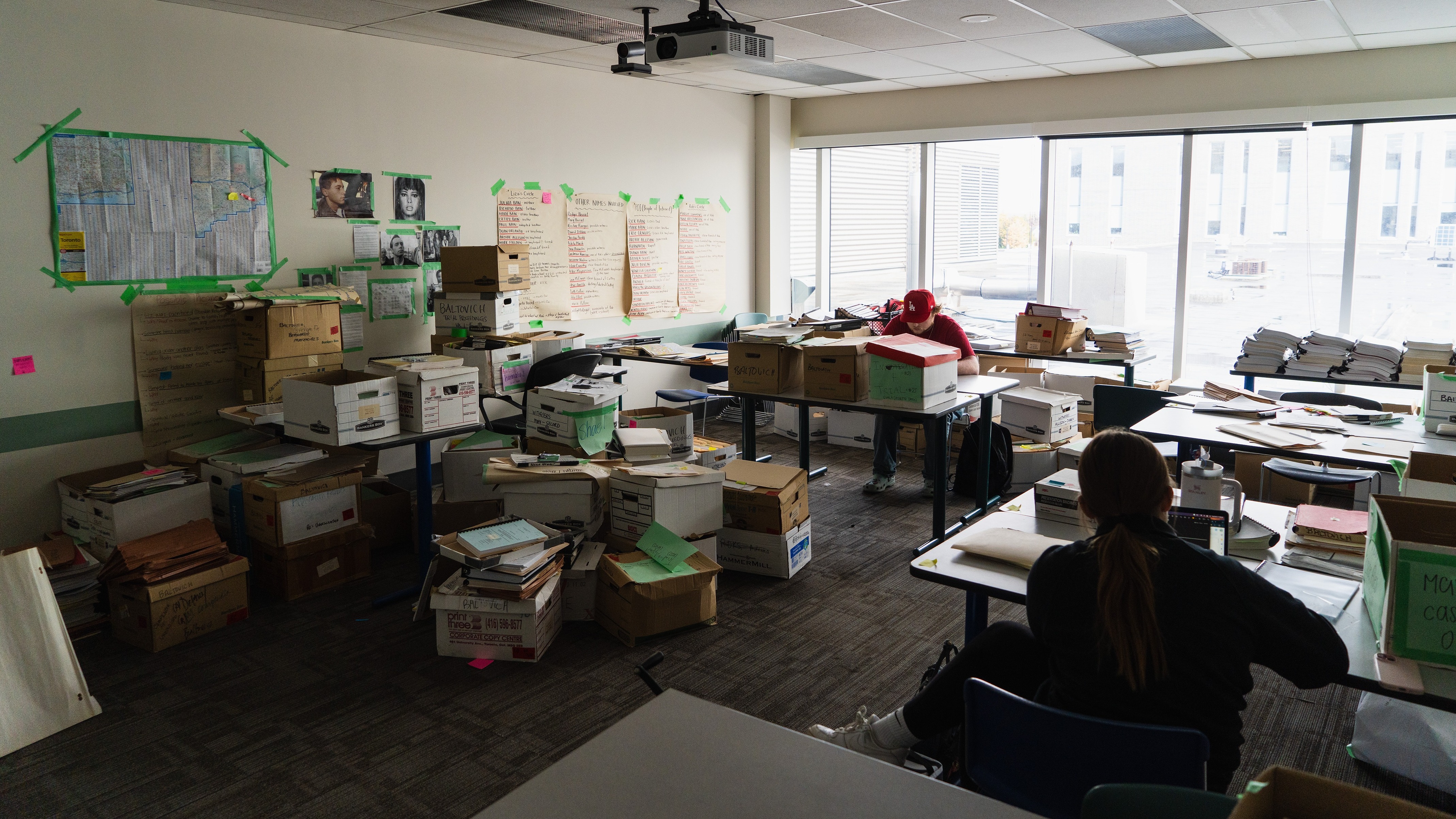Working a cold case: Guelph-Humber Justice Studies students, alumni investigate the Elizabeth Bain case files
Have you ever wanted to work on solving a real cold case? University of Guelph-Humber (UofGH) Justice Studies students have that unique opportunity — the chance to work on figuring out what happened to Elizabeth Bain in 1990 after she disappeared and was never found, and possibly point out meaningful investigative avenues to Toronto Police Cold Case investigators.
Bain’s disappearance captivated the City of Toronto at the time. She was a 22-year-old woman who seemingly vanished without leaving many clues behind.
“It's nice to really see [a case] up close instead of just [learning about it] through a book or on a screen,” Justice Studies alum Anna-Lisa Barrett said about her experience sleuthing.
Bain’s boyfriend, Robert Baltovich, was wrongly convicted of her murder in 1992, even though her body was never recovered. He was found not guilty during a retrial in 2008, after spending eight years in prison. Bain’s case remains a mystery to this day.

Through a connection to Baltovich, initially meeting him during the original investigation and then again at an Innocence Canada event, UofGH’s Professor John Irwin (who has over 30 years of service with the Toronto Police Service) was able to gain access to the case files through Baltovich. He runs an independent study course at the university, where students pour over boxes upon boxes (about 85 of them, to be specific) of authentic case materials to examine evidence and information related to the investigation. UofGH is the only school with access to these case files.
Irwin said the group has found new angles to persons of interest in the case that investigators can pursue. By looking at the case through a different lens and with a fresh set of eyes, they have identified questions never asked by police. They have come up with more than 20 points of interest. Any discoveries or tips are sent directly to police.
Students are excited about the opportunity to have real-world investigative experience. “It’s interesting reading [case files] that happened to an actual person because a lot of what we do in class are case studies instead of actual cases,” fourth-year Justice Studies student Jordana Tramontozzi said, who has just started working on the case this September.
For third-year Justice Studies student Owen Sullivan, who has spent over 200 hours working on the independent study course since last September, he gets to experience the duties of a forensic lead, hands-on. He said instead of taking a forensics techniques class during second year, he opted to take Irwin’s independent study instead.
“I got a lot of cataloguing experience. Knowing how to go through big boxes in a timely manner and knowing how to simplify a lot of big documents to put into a couple of pages summary [is what I learned],” Sullivan said.

In participating in this independent study course, students receive credit, but there are also alumni who previously participated in the independent study who return to work on the project even after graduation.
"I wanted to be part of this project because I thought it was a great opportunity to experience how an investigation really happens, and how to work with my peers and learn from them while also trying to share everything that I've learned in class and apply it to this real-life case,” Justice Studies alum Noah Ramsammy said.
Ultimately, Irwin emphasized that while he facilitated the investigation, “the students brought it to life” and are the ones who have made it a success. He hopes students can continue to probe the case beyond this semester.
“If we do end up getting to the outcome of this, the family will have comfort in knowing what actually happened. So that, to me, is a good driving factor,” Sullivan said.




